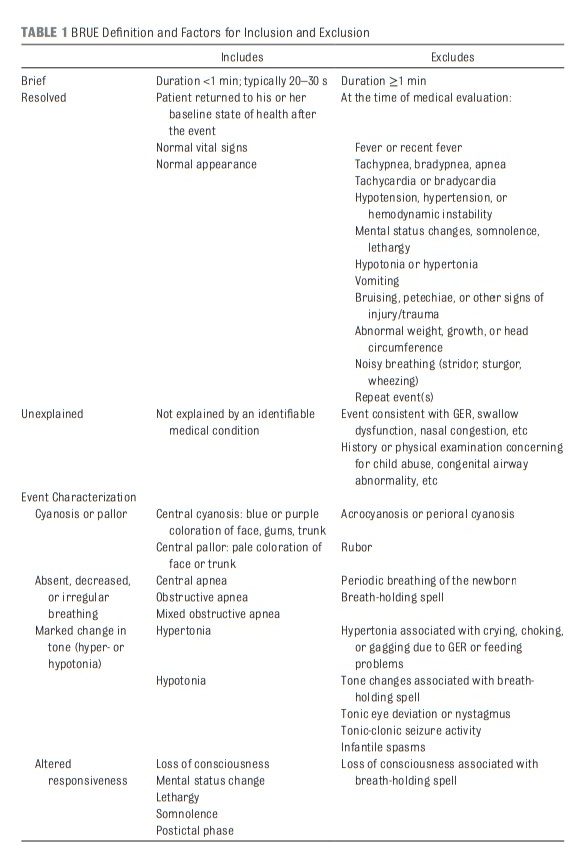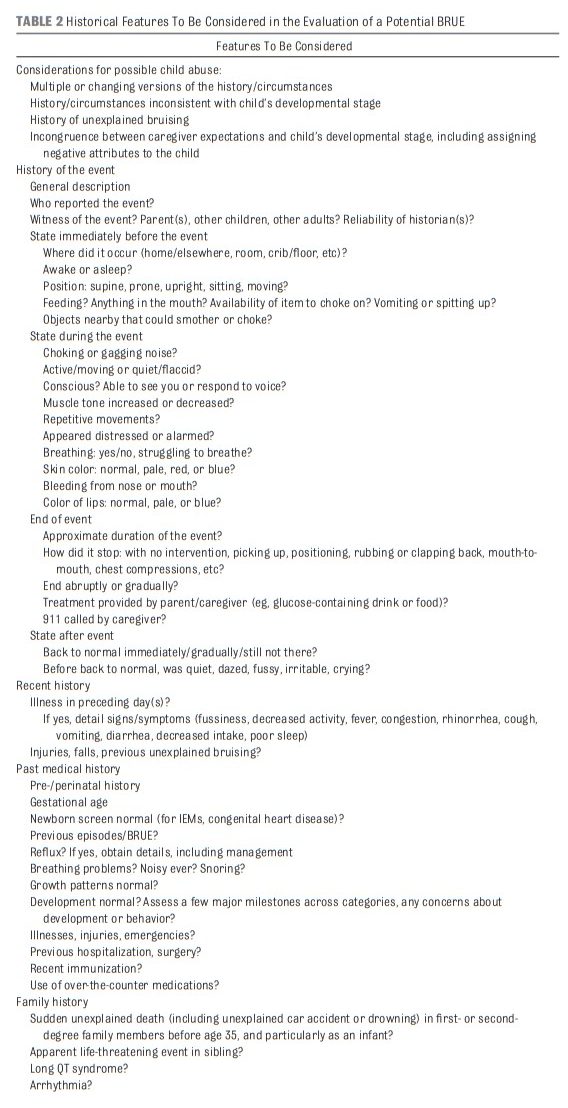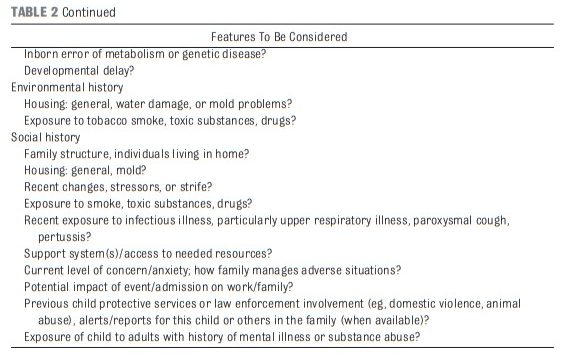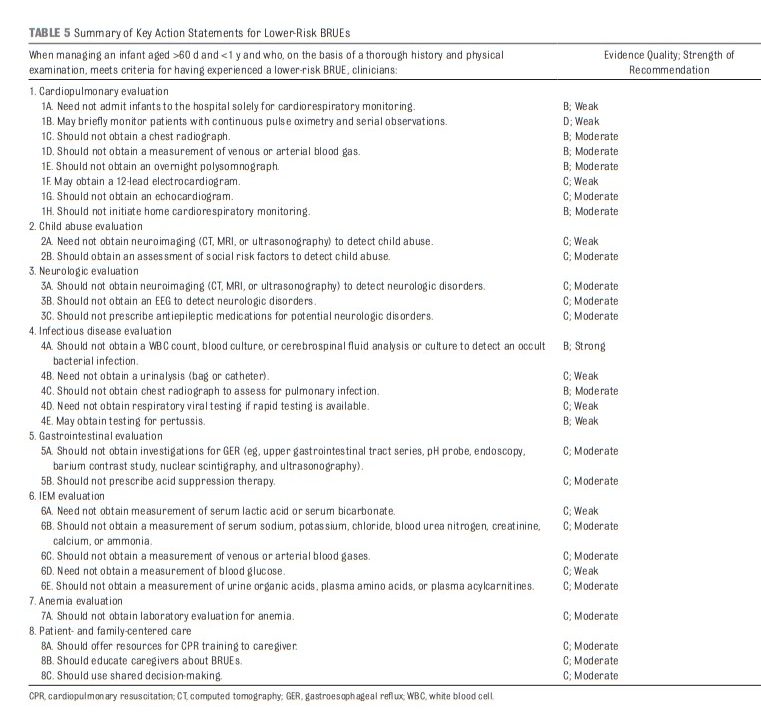Here is the link to Brief Resolved Unexplained Events (Formerly Apparent Life-Threatening Events) and Evaluation of Lower-Risk Infants [PubMed Abststract] [Full-Text HTML] [Full-Text PDF]. Pediatrics. 2016 May;137(5):e20160591. doi: 10.1542/peds.2016-0591. Epub 2016 Apr 25.
In addition to today’s resource, please see and review A Framework for Evaluation of the Higher-Risk Infant After a Brief Resolved Unexplained Event [PubMed Abstract] [Full-Text HTML] [Full-Text PDF]. Pediatrics. 2019 Aug;144(2):e20184101. doi: 10.1542/peds.2018-4101.
All that follows is from Brief Resolved Unexplained Events (Formerly Apparent Life-Threatening Events) and Evaluation of Lower-Risk Infants [PubMed Abststract] [Full-Text HTML] [Full-Text PDF]. Pediatrics. 2016 May;137(5):e20160591. doi: 10.1542/peds.2016-0591. Epub 2016 Apr 25.
BRUE DEFINITION
Clinicians should use the term BRUE to describe an event
occurring in an infant <1 year of age when the observer reports a sudden, brief, and now resolved episode of ≥1 of the following:• cyanosis or pallor
• absent, decreased, or irregular breathing
• marked change in tone (hyperor hypotonia)
• altered level of responsivenessMoreover, clinicians should diagnose a BRUE only when there
is no explanation for a qualifying event after conducting an
appropriate history and physical examination (Tables 2 and 3).PATIENT FACTORS THAT DETERMINE A LOWER RISK
To be designated lower risk, the following criteria should be met (see Fig 1):
• Age >60 days • Prematurity: gestational age ≥32 weeks and postconceptional age ≥45 weeks
• First BRUE (no previous BRUE ever and not occurring in clusters)
• Duration of event <1 minute
• No CPR required by trained
medical provider
• No concerning historical features (see Table 2)
• No concerning physical examination findings (see Table 3)Infants who have experienced a BRUE who do not qualify as lower risk patients are, by definition, at higher risk. Unfortunately, the outcomes data from ALTE studies
in the heterogeneous higher-risk population are unclear and preclude the derivation of evidence-based
recommendations regarding management. Thus, pending further research, this guideline does not provide recommendations for the management of the higher-risk
infant.*
*Please see A Framework for Evaluation of the Higher-Risk Infant After a Brief Resolved Unexplained Event [PubMed Abstract] [Full-Text HTML] [Full-Text PDF]. Pediatrics. 2019 Aug;144(2):e20184101. doi: 10.1542/peds.2018-4101.










